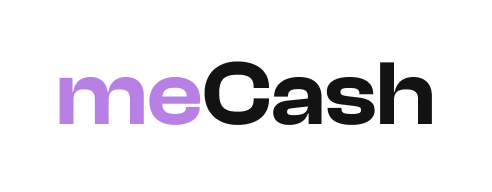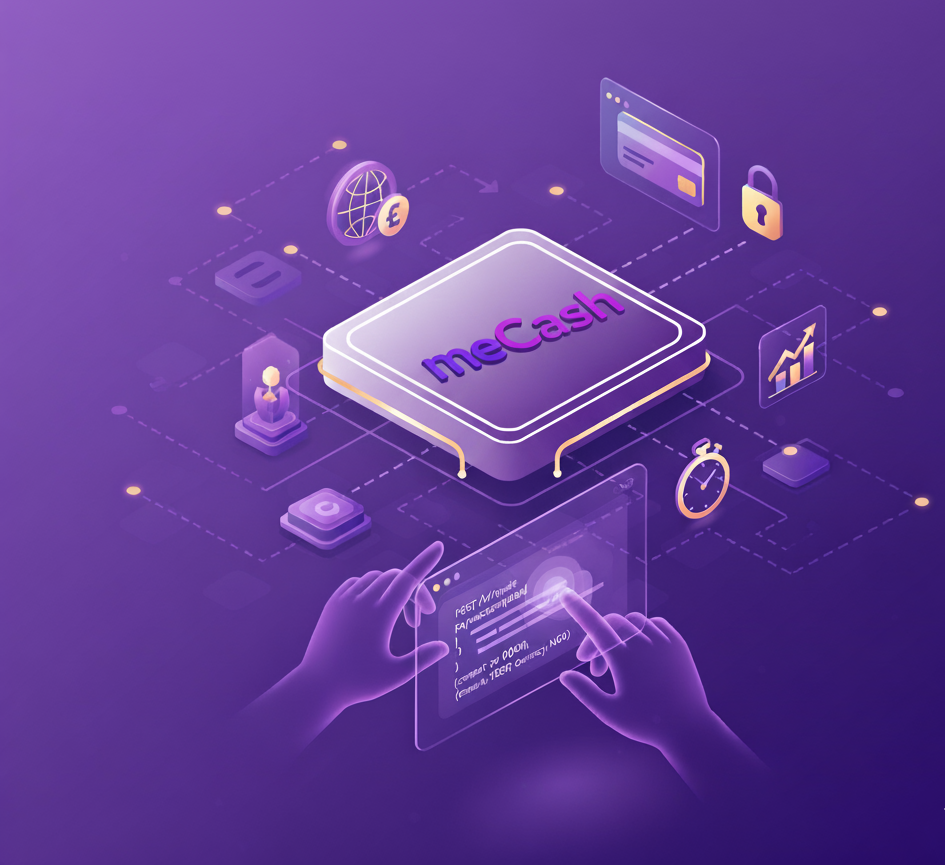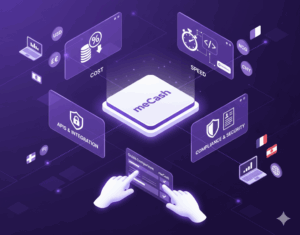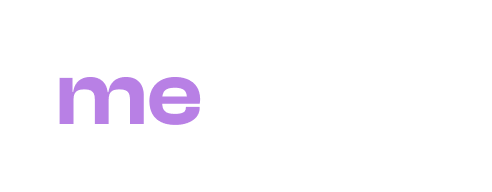With the meCash API, you can connect international payments, currency conversion, and virtual accounts directly into your own systems — letting your business move money globally with ease.
This guide covers:
- Why integrating with meCash benefits your business
- How the integration process works (step-by-step)
- Key API components: Quotes, Payouts, Virtual Accounts, Webhooks
- Best practices for developers
- Real-world integration use cases
Why Integrate with meCash?
Integrating directly with the meCash API unlocks a suite of strategic advantages that can transform your financial operations. Here’s how leading businesses are leveraging our platform to gain a competitive edge:
ntegrating directly with the meCash API unlocks a suite of strategic advantages that can transform your financial operations. Here’s how leading businesses are leveraging our platform to gain a competitive edge:
- Global reach with local simplicity: We empower you to send and receive payments in numerous currencies and countries through a single, unified API and dashboard. This eliminates the need to manage complex, fragmented relationships with multiple local banks, simplifying your international expansion.
- Enhanced speed and cost efficiency: By replacing outdated and complex banking networks with our streamlined cross-border solution, you can significantly reduce transaction times and operational costs. Your team can focus on growth instead of managing financial logistics.
- A modern developer experience: Our API is built for developers. We provide RESTful endpoints, comprehensive and clear documentation, and a fully-featured sandbox environment. This allows your team to build, test, and deploy integrations faster and with greater confidence.
- Predictable and transparent pricing: Financial uncertainty is a major challenge in international trade. Our Quote API solves this by providing exact exchange rates and fees before you commit to a transaction, ensuring you always know the precise cost.
- Powerful automation capabilities: You can automate your entire payment lifecycle by setting up webhooks. These automated notifications instantly update your systems when payouts are completed or funds are received, eliminating manual reconciliation and reducing the risk of human error.
Getting started: your integration roadmap
Convinced of the benefits? Let’s walk through the straightforward process of getting your integration up and running. Our goal is to make this journey as smooth as possible, from initial setup to your first live transaction.
- Create your business account and complete KYB: The first step is to sign up for a meCash business account on our official website. As a regulated financial service, we are required to perform a Know Your Business (KYB) verification. This process ensures the security and compliance of our network.
- Access the developer dashboard and generate API keys: Once your account is verified, you will gain access to the Developer Dashboard. This is your central hub for managing your integration. Navigate to the “API Keys” section to generate your unique keys for both the sandbox (testing) and production (live) environments. Treat these keys like passwords and store them securely.
- Configure your sandbox environment: The meCash Sandbox is a complete testing environment that mirrors our live production systems. Use your sandbox API keys to configure your development environment. This allows you to build and test your integration thoroughly without touching real funds.
- IP whitelisting for enhanced security: For an added layer of security, we strongly recommend whitelisting the IP addresses of the servers that will be making API calls. This ensures that only authorized systems can interact with your meCash account. You can configure this in the Developer Dashboard.
- Map your use case and design your workflow: Before writing code, map out your desired workflow. Will you be primarily sending payouts to vendors, collecting payments from customers via virtual accounts, or both? Identify the specific API endpoints you’ll need—such as
POST /v1/quoteorPOST /v1/payouts—and design the logic of your application around them. - Build and test in the sandbox: With your workflow designed, you can begin building your integration. Use our detailed API documentation to understand the request and response formats for each endpoint. Simulate various scenarios in the sandbox, including successful transactions, failed payments, and quote expirations, to ensure your application handles them gracefully.
- Go live: Once you have thoroughly tested your integration and are confident in its stability, you can switch from the sandbox to the production environment. Simply swap your sandbox API keys for your live production keys. We recommend starting with a small volume of transactions and gradually ramping up as you monitor your system’s performance.
Key API component: the Quotes API
The Quote API is the cornerstone of financial transparency. It allows you to get a real-time exchange rate and a complete fee breakdown before initiating any transfer, locking in the price to avoid market volatility.
Endpoint: POST /v1/quote
A typical request to this endpoint will include the source and target currencies and the amount you wish to send.
Example Request:
JSON
{
"paymentChannel": "BANK_TRANSFER",
"source": {
"amount": 100000,
"country": "NG",
"currency": "NGN"
},
"target": {
"country": "DK",
"currency": "EUR"
}
}
The API responds with a unique quoteId, the source and target amounts, the locked-in exchange rate, all applicable fees, and an expiration time for the quote. You will use this quoteId when creating a payout to guarantee the rate and cost.
Key API component: the Payouts API
The Payout API is your gateway to sending funds efficiently across the globe. meCash actively maintains and expands a growing list of supported payout routes to meet your business needs.
Supported payout routes meCash currently supports sending payouts to various destinations, including:
- 🇳🇬 Nigeria (NGN → NGN, USD, GBP, EUR)
- 🇲🇼 Malawi (MWK → MWK)
Each route has unique limits and compliance requirements, so we recommend consulting the full documentation for the most current information.
Example Request:
JSON
curl --location --globoff '{{baseURL}}/v1/quote' \
--header 'x-api-key: YOUR_API_KEY' \
--header 'Content-Type: application/json' \
--data '{
"paymentChannel": "",
"source": {
"amount": 150000,
"country": "NG",
"currency": "NGN"
},
"target": {
"country": "US",
"currency": "USD"
}
}'Upon a successful request, the API returns a quote ID, status, and your reference. You can then track the transaction’s progress (payout.pending, payout.completed, payout.failed) using webhooks.
Key API component: the Virtual Accounts API
The meCash Virtual Accounts API lets you generate unique, traceable bank accounts on demand. This is perfect for businesses that need to automate payment collections, simplify customer reconciliation, or manage invoicing at scale without relying on manual processes.
Endpoint: POST /v1/virtual-account
With this API, you can create two types of virtual accounts:
- Dynamic Virtual Accounts: Temporary accounts that expire after a set time — ideal for one-time or short-term transactions like invoice payments.
- Static Virtual Accounts: Permanent accounts assigned to a specific customer — best for recurring or long-term use cases like subscriptions.
When you create a virtual account, the API returns a unique account number, currency, expiry time (for dynamic accounts), and a reference ID. Each virtual account is directly linked to your business wallet, and incoming payments trigger real-time webhook events, ensuring instant and accurate reconciliation.
Example use case: Automating subscription payments
Let’s say you run a subscription platform that bills customers monthly across different countries. With meCash, you can automate the entire payment flow:
- Account Creation: Your backend calls the Virtual Accounts API to generate a unique account for each new subscriber in their local currency (e.g., NGN, GHS, EUR).
- Use static virtual accounts for ongoing subscriptions.
- Use dynamic virtual accounts for one-time or trial payments.
- Payment Collection:The subscriber receives their dedicated account number and makes the payment through a standard bank transfer.
- Real-Time Detection
meCash detects the transaction immediately upon arrival. - Automated Notification: A
virtualaccount.completedwebhook fires, notifying your system in real time. - System Update: Your platform updates the subscription status, marks the invoice as paid, and credits the customer’s account — no manual intervention required.
Automate and react with Webhooks
The magic behind the real-time automation in our use case is powered by Webhooks. These are automated messages sent from meCash to your system when an event occurs. You can subscribe to critical events like:
payout.completedcollection.completedvirtualaccount.completedramp.payout.completed
By listening for these events, you can automate internal actions such as updating ledgers, sending customer receipts, or triggering downstream workflows in other systems.
Best practices for a secure and robust integration
To ensure your integration is secure, reliable, and scalable, we recommend following these essential best practices:
- Secure your API keys: Never expose your API keys on the client-side (e.g., in a mobile app or website). Store them securely on your server.
- Use IP whitelisting: For an added layer of security, configure your account to only accept API calls from a list of approved server IP addresses.
- Test thoroughly in sandbox: Before going live, use the sandbox to prevent errors and ensure your integration can handle all expected scenarios.
- Log and monitor: Keep detailed logs of all API responses and incoming webhook events. This is crucial for debugging and tracking activity.
- Handle quote expirations: Remember that quotes are time-limited. Your application should gracefully handle expired quotes by requesting a new one.
- Automate reconciliation: Leverage webhooks and virtual accounts to create a seamless, automated reconciliation process that saves time and reduces errors.
Summary
Integrating your business with the meCash API unlocks a world of possibilities. You gain global payment access with locked-in rates, automate your collections and payouts with real-time notifications, and scale your operations through one secure, modern platform.
Whether you’re paying international suppliers, collecting payments from a global customer base, or managing multi-currency wallets, meCash’s APIs provide a simple, fast, and reliable foundation for your financial infrastructure.
Ready to build?
- 👉 Explore the meCash Developer Documentation
- 👉 Test everything safely in the Sandbox Playground
- 👉 Contact our team for a personalized demo





